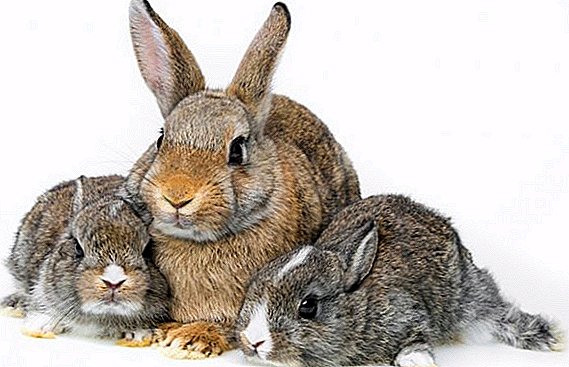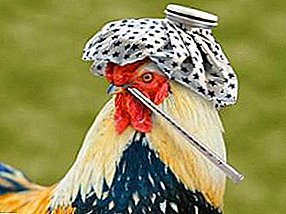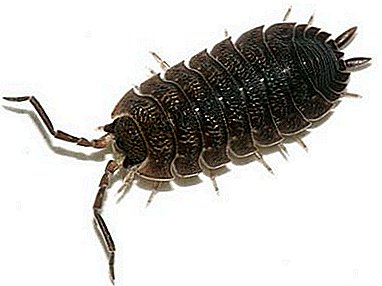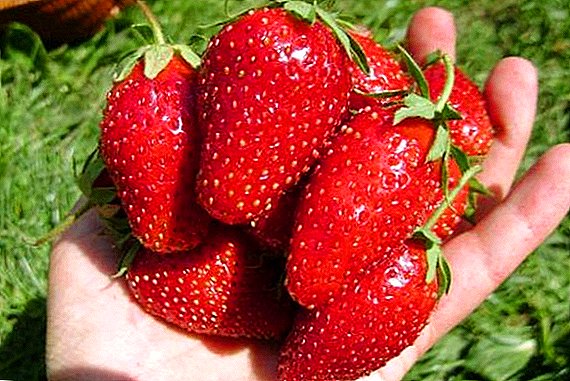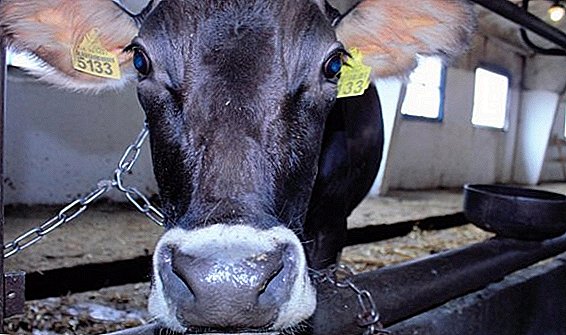 Fetal embryonic development in the womb of a cow takes place within 285 days after fertilization. Insemination of heifer is carried out a maximum on the sixtieth day after calving, a longer service period provokes rawness and chatter.
Fetal embryonic development in the womb of a cow takes place within 285 days after fertilization. Insemination of heifer is carried out a maximum on the sixtieth day after calving, a longer service period provokes rawness and chatter.
As soon as the cow comes to a state of hunting, she is inseminated. If this process coincides with the period of ovulation, fertilization occurs. Visually determine the pregnancy of the female can be approximately the fifth month of gestation. This article will discuss ways to determine pregnancy at the earliest dates, the reasons for the lack of fertilization and the prevention of complications.
Features of the course of pregnancy
Dates of pregnancy in cows coincide with women. The average term is nine months, while there are deviations within one to two weeks, which depend on the conditions of detention and the physical condition of the animal. Sexual activity in young females is manifested from the age of six months, but the physical maturity of the chick reaches only 1.5-2 years. The pregnancy begins from the day of fertilization of the animal and includes fertilization, the pregnancy itself, the launch and the dry period.  Pregnancy is the bearing of a female fetus, launch - a period in which the formation of milk in the udder gradually decreases. Dry period - a stage that lasts two months before calving, during which the cow does not give milk, since all the nutrients go to the fetus. Particularly highly productive animals to enter the dead wood must be forced, reducing the flow of water and succulent feed.
Pregnancy is the bearing of a female fetus, launch - a period in which the formation of milk in the udder gradually decreases. Dry period - a stage that lasts two months before calving, during which the cow does not give milk, since all the nutrients go to the fetus. Particularly highly productive animals to enter the dead wood must be forced, reducing the flow of water and succulent feed.
Important! During the first insemination, the weight of the young heifer should be at least 280 kg (60% of the average weight of an adult individual). This physical form is optimal for carrying out insemination. Lighter and younger females will not be able to make healthy offspring.
Infertile cows can not produce offspring due to the resulting or congenital defects of the reproductive system, past infectious diseases, improper artificial insemination techniques and psychological trauma. Females are considered as young, which came to the hunt for three months after calving, but could not be fertilized after insemination.
How to find out if a cow is covered or not
In the second half of pregnancy, the fetus grows enough to change the external contours of the peritoneum. In order to determine the pregnancy at an earlier date, you will have to resort to popular or laboratory methods. 
In the first month
The most accurate way to determine fertilization is the absence of estrus in due time. If the female has become more calm, cautious and docile, it means that the pregnancy has begun. The fertilized cow does not respond to the bull, behaves quietly and has a good appetite. Another sign of pregnancy is the clear mucous discharge that appears on the external genitals. The female is rounded, her coat becomes shiny, soft and smooth.
Did you know? The milk productivity of a cow can be predicted based on the productivity of its mother and father. This indicator for the mother is calculated by its annual milk yield, and the bull can be recognized by the total milk yield of his daughters. Especially productive cow for 3-4 years of lactation gives more than 200 thousand glasses of milk, and a herd of 60 of the same high-quality cows can produce more than a ton of milk per day!
A month later
During the first three months after calving, the hormonal level of the cows does not change. Changes begin in the fourth to fifth weeks after fertilization, and from this time you can carry out hormonal laboratory tests.  Ultrasound is another way to determine pregnancy. Ultrasound will determine the degree of fetal development and the presence of deviations in its development.
Ultrasound is another way to determine pregnancy. Ultrasound will determine the degree of fetal development and the presence of deviations in its development.
Important! Ultrasound examination of the fetus has been shown since the sixth week of pregnancy, since in earlier periods it will negatively affect the fetus until it triggers a miscarriage.
On late terms
Rectal examination is the feeling of the uterus and its horns through the walls of the rectum. The veterinarian puts on a glove with a long sleeve, after making sure that he does not wear rings on his fingers. Through the anus of an animal, it smoothly inserts the hand into the rectum and gropes at the base of the hip joint the cervix.  In a fertilized female, the uterus cannot be covered with one hand, and the horns of the uterus will differ in size. The horn in which the fruit is formed will respond to vibrations by touch, therefore, it must be felt for a short time and with caution. The external examination of the animal will be just as effective. Starting from the fifth month, palpation of the abdominal cavity will show the whole condition of the fetus, including its location and size, and listening will give an opportunity to measure the heartbeat.
In a fertilized female, the uterus cannot be covered with one hand, and the horns of the uterus will differ in size. The horn in which the fruit is formed will respond to vibrations by touch, therefore, it must be felt for a short time and with caution. The external examination of the animal will be just as effective. Starting from the fifth month, palpation of the abdominal cavity will show the whole condition of the fetus, including its location and size, and listening will give an opportunity to measure the heartbeat.
Did you know? The sense of smell of a cow is very poorly developed - worse than that of goats, horses and sheep. However, it easily determines the quality of the feed and will not graze where fertilizer has recently been applied. Apparently, as compensation, the cow was given an amazing ability to feel the magnetic field of the Earth. If you give her the opportunity to settle down for the night on her own, she will certainly become a corps along the magnetic field lines.
Determination of pregnancy by the folk method
In addition to an external examination of the genital organs and an analysis of the behavior of the animal, a pregnancy test can be carried out for milk. It is necessary to top the glass with water at room temperature and gently drop a few drops of milk onto the surface of the water. If it spread on the water with a thin film and painted it white, fertilization did not occur.  The milk of the pregnant female will fall as a whole into the bottom of the glass, only spreading a little in the water. Another method of testing is associated with an increase in the level of the hormone progesterone in cow's milk during pregnancy. Milk of a cow in cows when mixed with medical alcohol in a 1: 1 ratio will curdle faster than milk heifers.
The milk of the pregnant female will fall as a whole into the bottom of the glass, only spreading a little in the water. Another method of testing is associated with an increase in the level of the hormone progesterone in cow's milk during pregnancy. Milk of a cow in cows when mixed with medical alcohol in a 1: 1 ratio will curdle faster than milk heifers.
Why a cow is not covered
In farms where two sexually mature individuals of different sex live, fertilization occurs naturally, and the question of covering up the cow does not arise. On the contrary, on farm farms there are frequent cases of barley cows, and the reasons for this are different.
Important! The rectal method gives an accurate picture of the onset of pregnancy, but it can only be carried out by experienced breeders. Inaccurate and inept handling of an animal can cause miscarriage.
Reason in bull
Bulls are usually selected very carefully, but there are cases in which the quality of the semen product deteriorates due to inadequate conditions of detention. An unviable sperm cannot fertilize an egg, and the pregnancy does not occur in a cow. First of all, it is necessary to check the health of the bull - to clarify whether he has genital injuries or infectious diseases.  Incorrect mating, in which the female resists rough handling, also does not lead to fertilization. Artificial insemination can be a solution to a bull problem. High-quality sperm doses ensure healthy offspring and the insemination process without undue stress.
Incorrect mating, in which the female resists rough handling, also does not lead to fertilization. Artificial insemination can be a solution to a bull problem. High-quality sperm doses ensure healthy offspring and the insemination process without undue stress.
Psychological problems
The readiness of the female for insemination is the key to successful fertilization. If the female is shy, young and reacts badly to the presence of a bull, it is better to switch to an artificial way. Special psychological discomfort occurs in females who have had a negative experience of natural insemination.
Did you know? The cattle population of the United States is measured in hundreds of millions of heads. If you collect all the manure that these animals produce in a year, and extract biogas methane from it, then the electrical energy obtained from its processing will produce more than one hundred billion kilowatt-hours. This volume will be enough to constantly supply electricity to more than a million multi-storey residential buildings.
Nymphomania
Excessive sexual response is characteristic of young calves and cows, which have hormonal disorders. Nymphomania in cows develops with increasing intensity. At first, the estrus phase is extended each time, then the hunting period increases, and in neglected situations the animal is in the hunt continuously.  However, this process is not accompanied by ovulation, therefore fertilization is impossible. The animal loses weight and productivity, it becomes nervous, hyperactive and noisy.
However, this process is not accompanied by ovulation, therefore fertilization is impossible. The animal loses weight and productivity, it becomes nervous, hyperactive and noisy.
Infections
Inflammatory processes in the genitals - another one of the reasons that pregnancy does not occur. Infectious diseases can only be identified and eliminated by a qualified veterinarian, as they most often proceed in a latent form. Often infectious diseases mistakenly include the presence of corpus luteum on the ovary.
Find out why a miscarriage happens to a cow and how to properly feed dry cows.
It is a temporary gland that secretes progesterone, stopping the development of new eggs. In some cows, it does not dissolve after calving and continues to inhibit sexual functions. The corpus luteum is eliminated by a single injection of prostaglandin or crushed by hand.
Important! The presence of infectious diseases is indicated by discharge of purulent type from the genitals, changes in the quality of milk, the presence of bitter or salty taste in it. To determine the causative agent of infection for sure, it is necessary to conduct a series of laboratory tests.
Preventive measures
Regular veterinary examinations and good housing conditions will help maintain the health and productivity of the animal. Compliance with sleep, nutrition and rest will provide the cow with all the necessary substances and will create a comfortable psychological climate for her. Only an animal that feels good can successfully become pregnant and bear a healthy calf.  A competent caring owner always observes the behavior of his cattle and notices even insignificant deviations from the norm in time. A timely visit to the veterinarian for advice will help determine the cause of the lack of pregnancy in a cow, eliminate it, and fertilize the female for the purpose of subsequent increase in herd.
A competent caring owner always observes the behavior of his cattle and notices even insignificant deviations from the norm in time. A timely visit to the veterinarian for advice will help determine the cause of the lack of pregnancy in a cow, eliminate it, and fertilize the female for the purpose of subsequent increase in herd.



